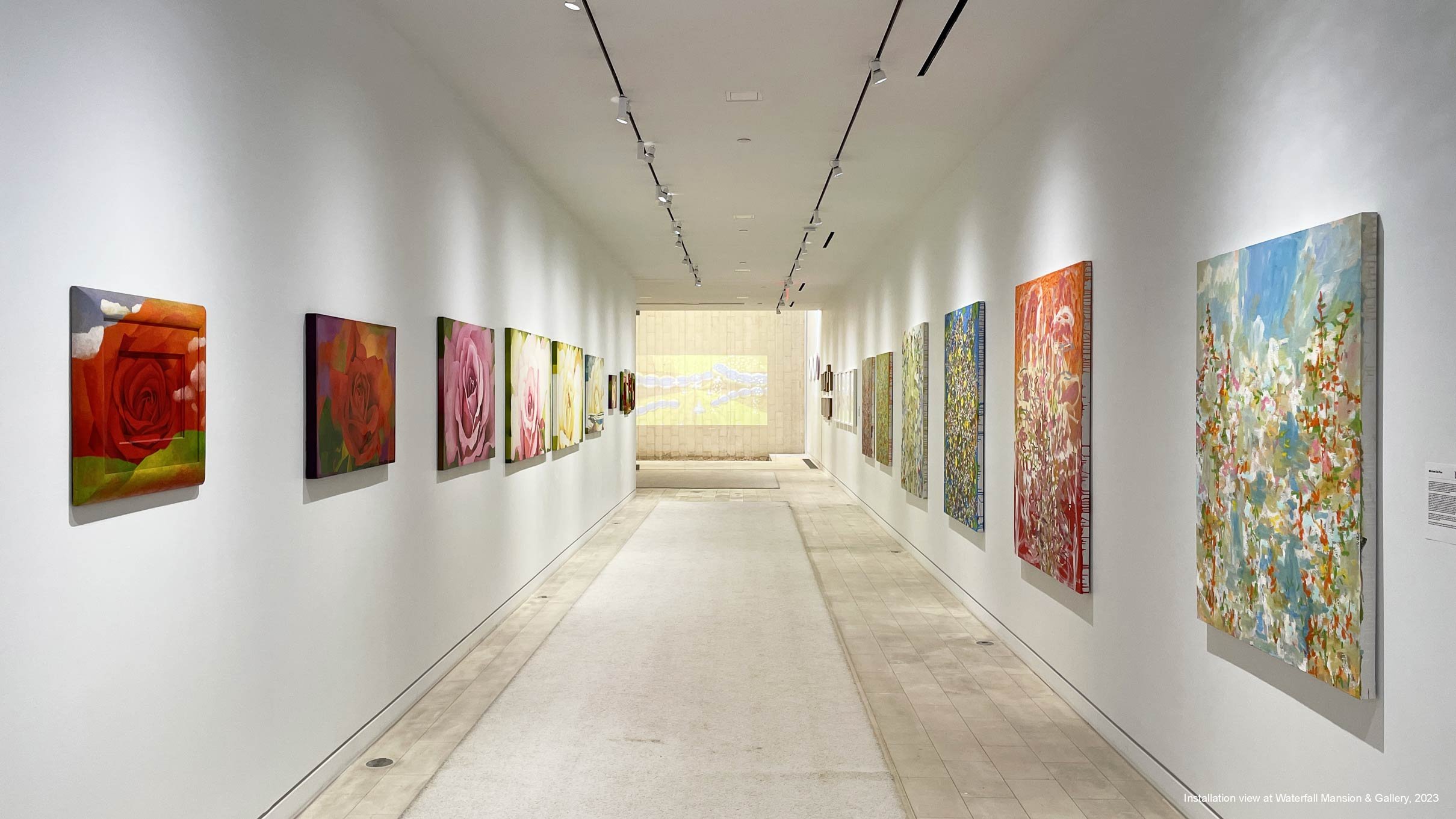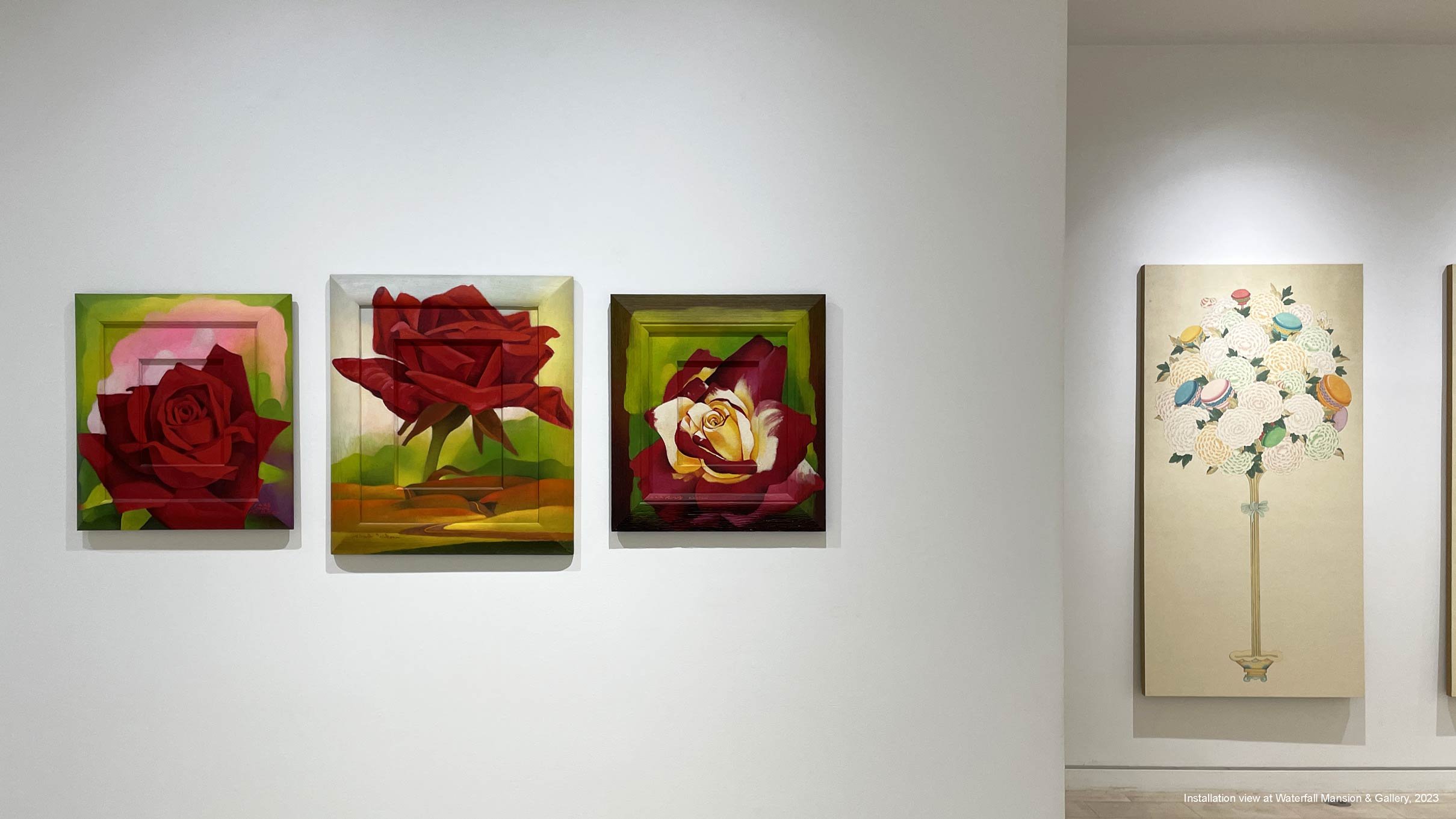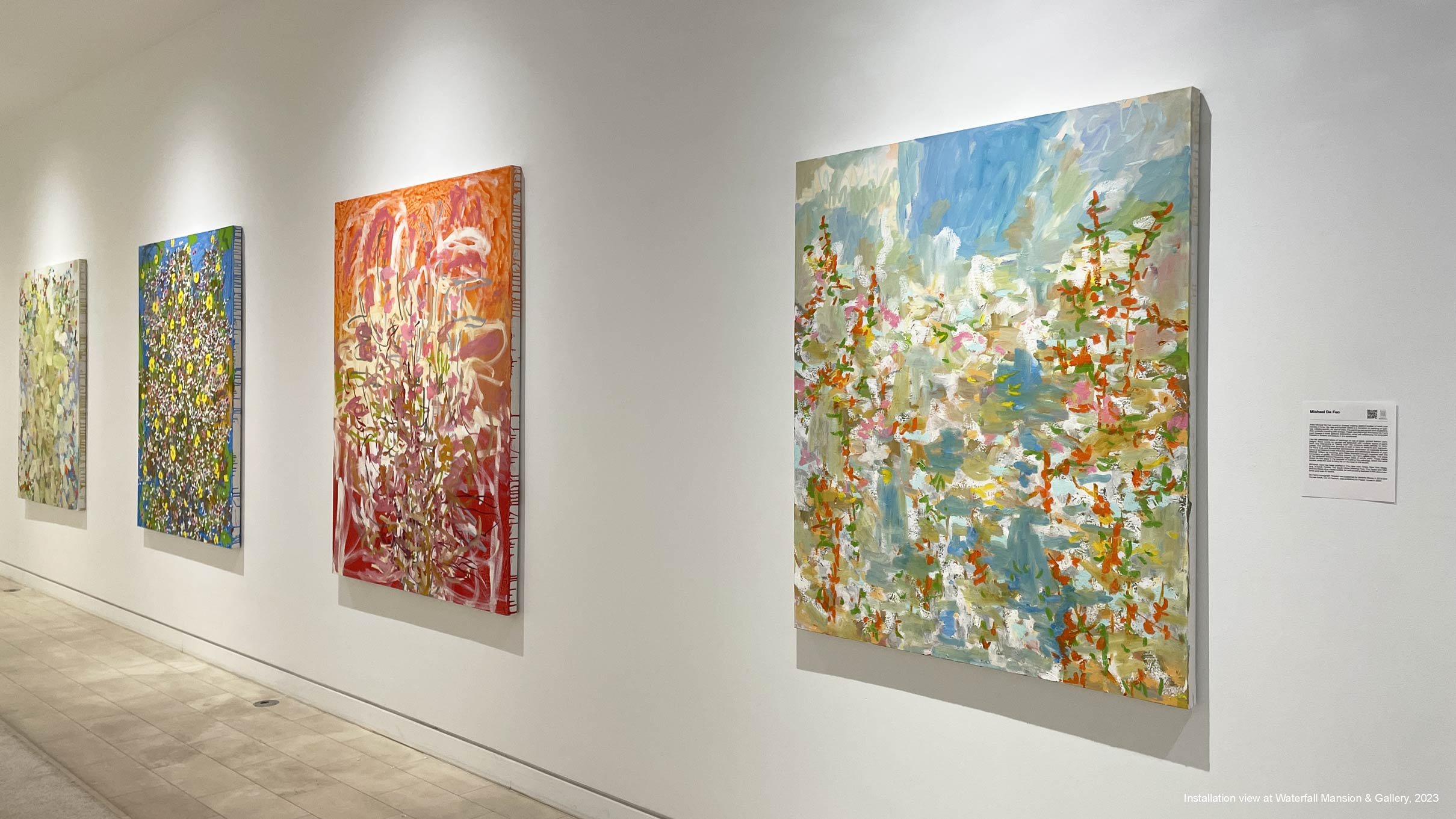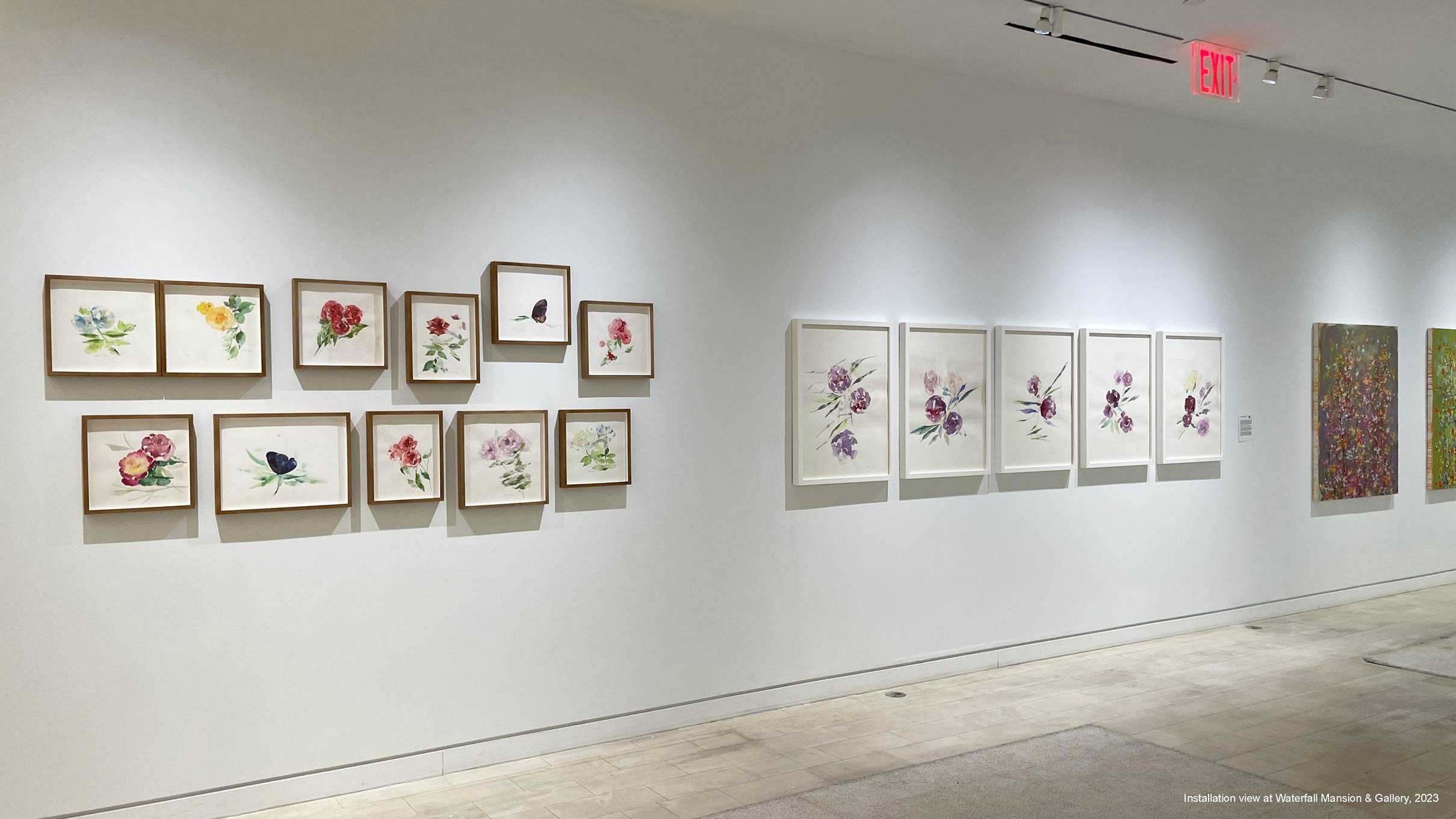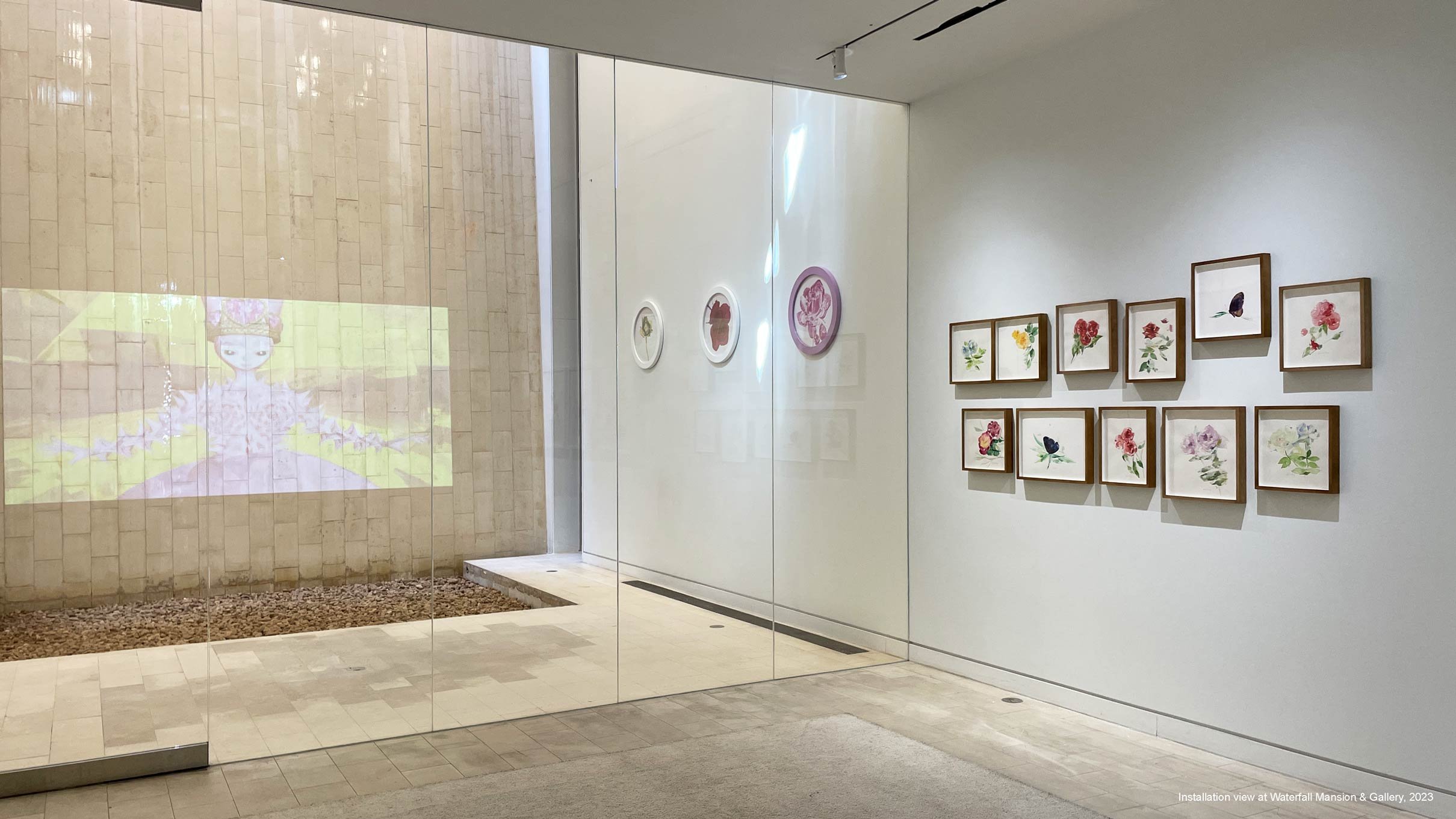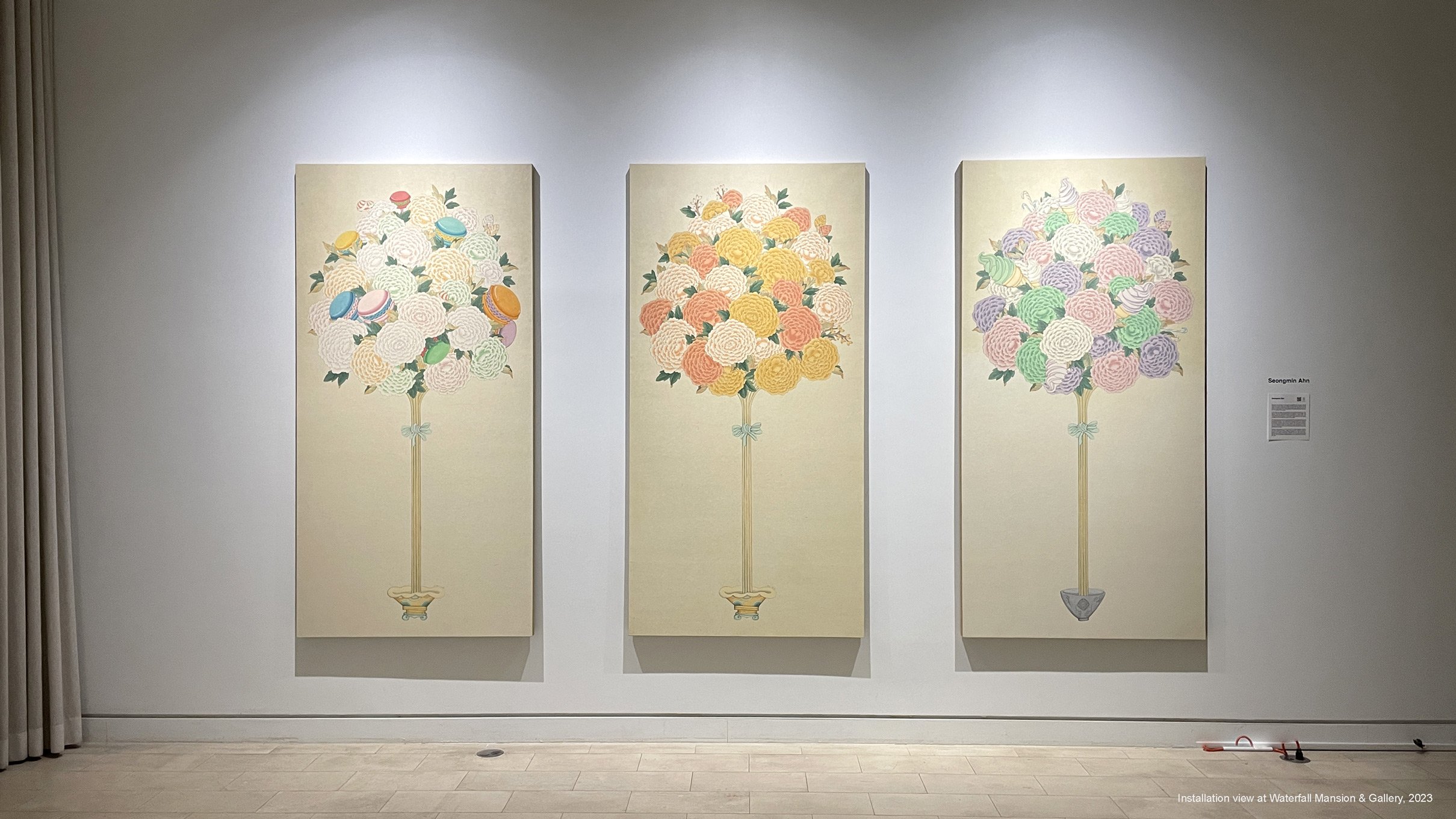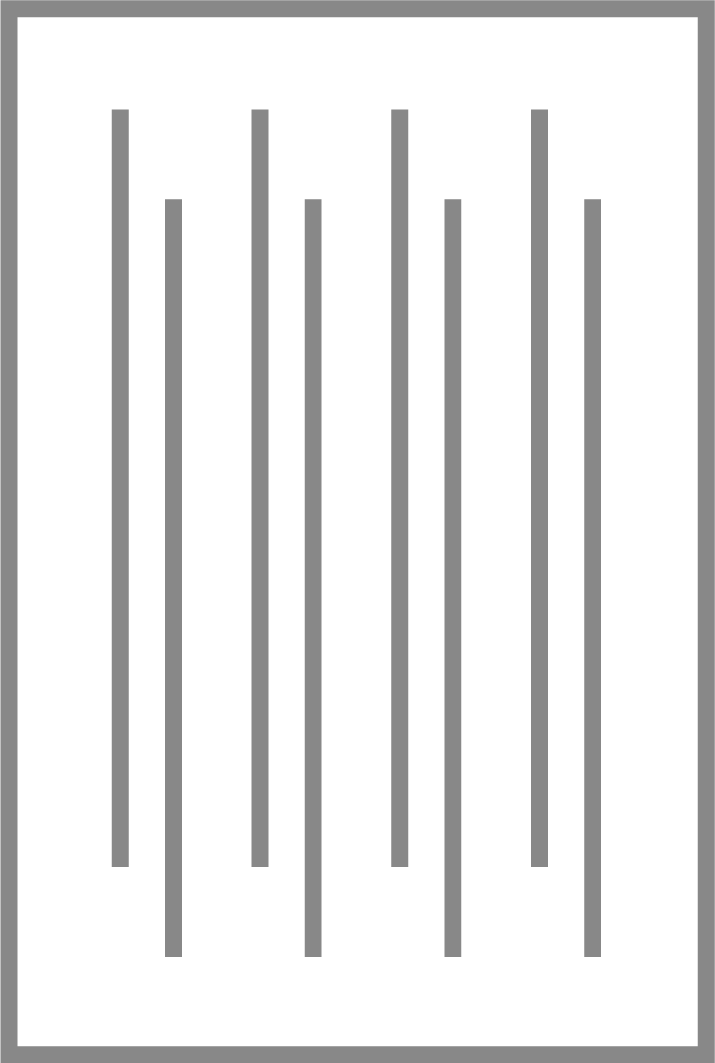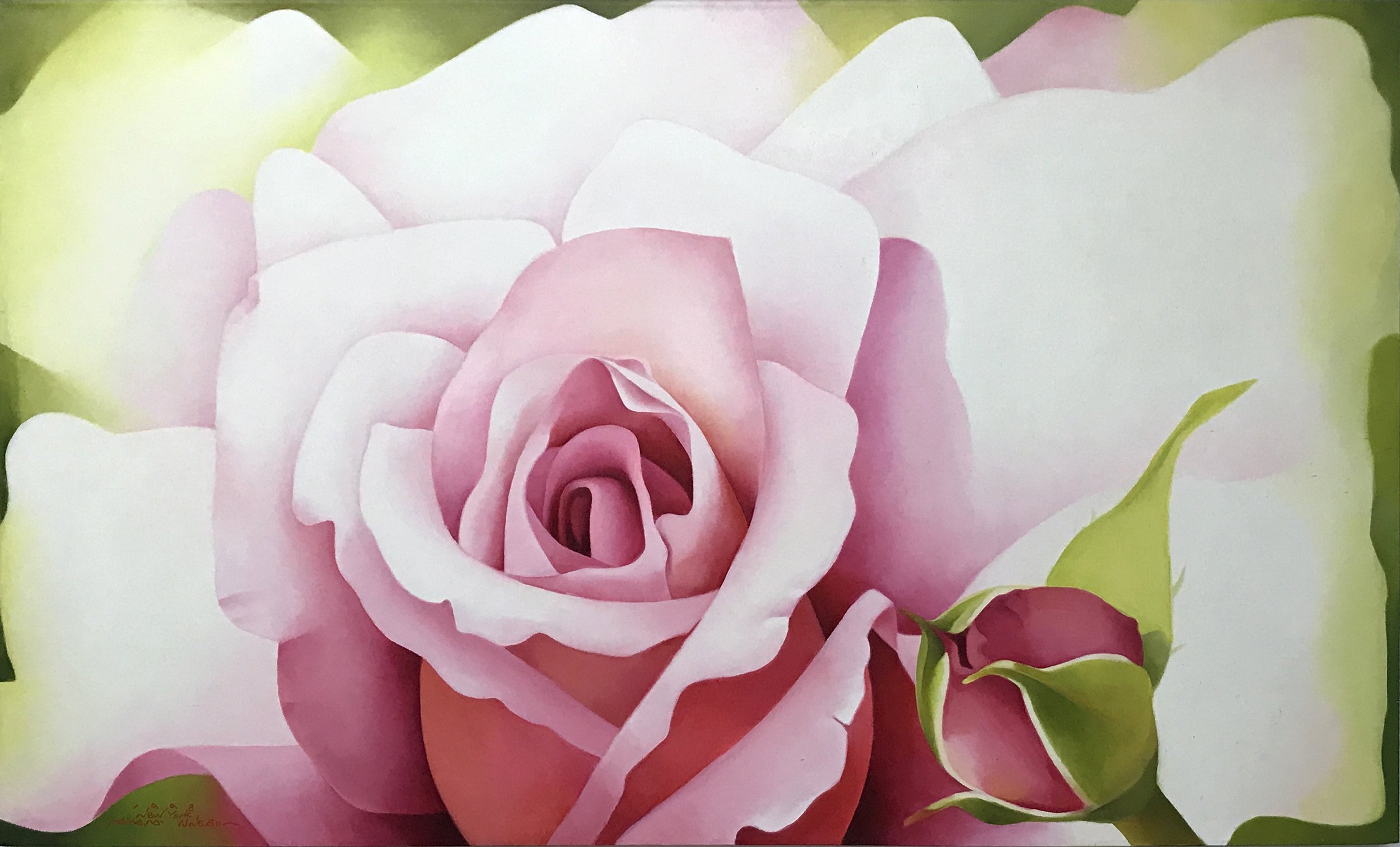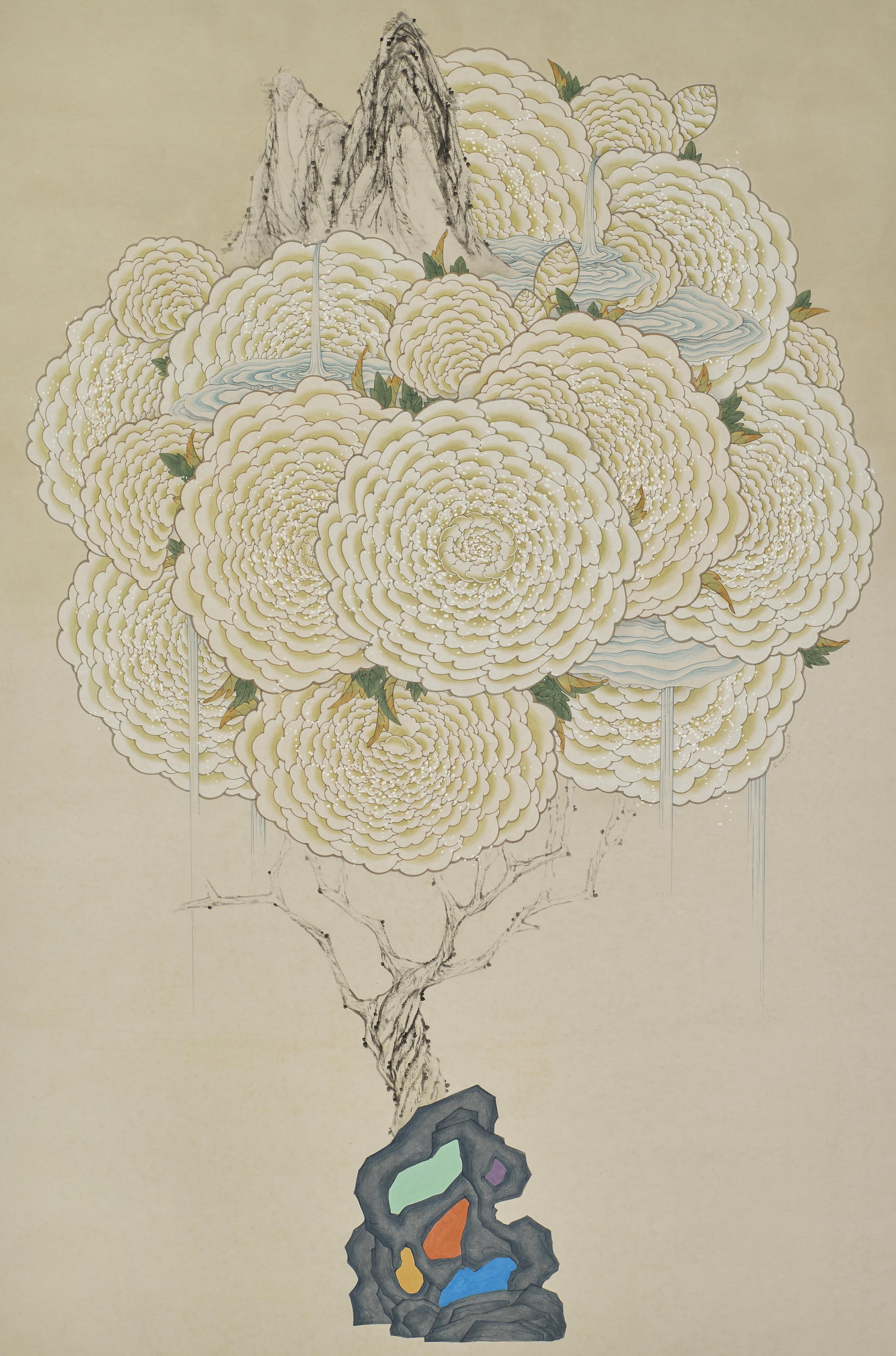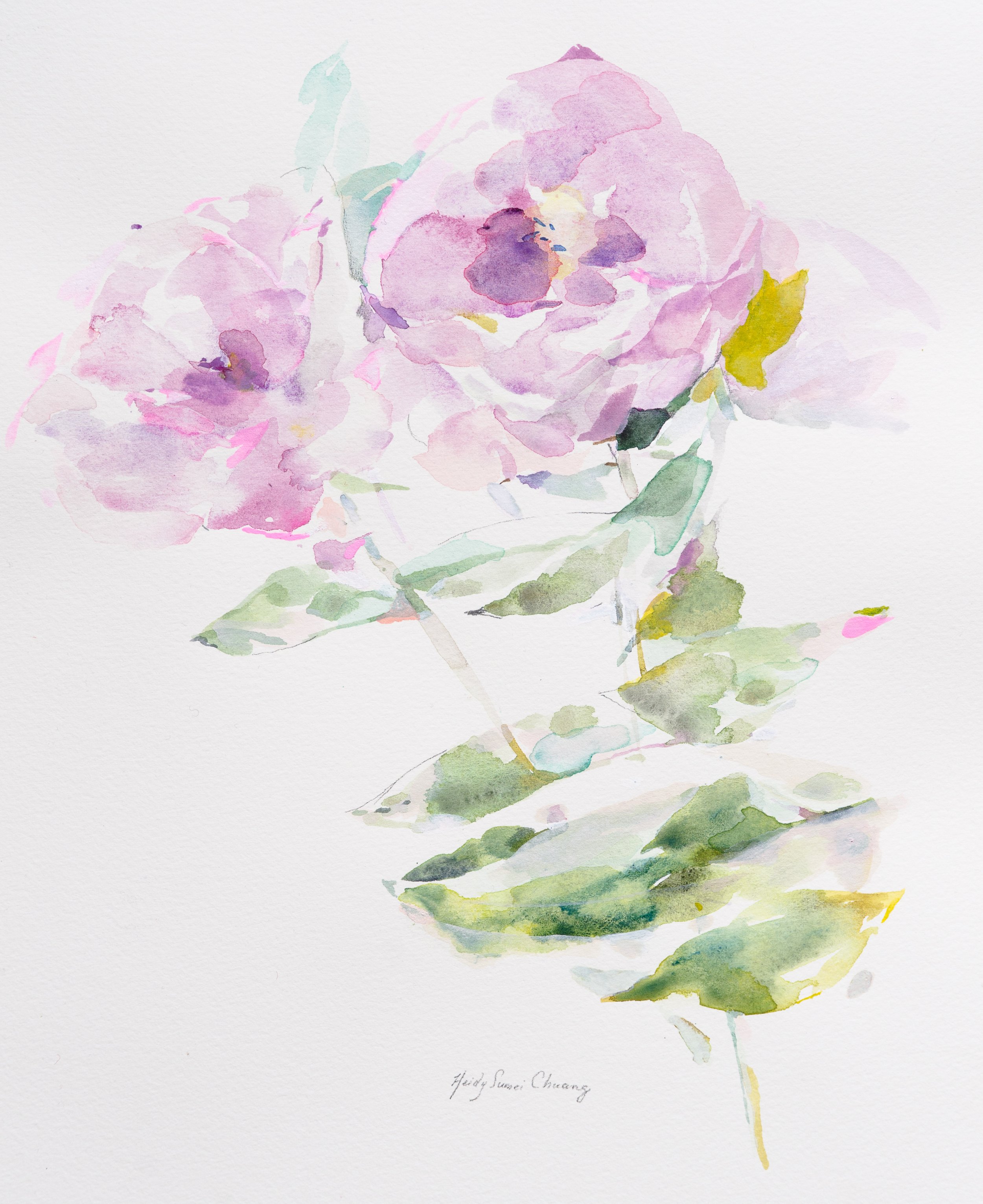A BLOOMING RESILIENCE
The resilience of nature has long been a source of inspiration for artists, from Ancient Egypt to contemporary art. In particular, flowers have remained an important symbolic subject for artists to convey social ideals, cultural values, personal emotions, and visions.
<A Blooming Resilience> is a collection of 5 international contemporary artists who create with the lens of resilience through delicate details and bold palettes inspired by the language of flowers. With these works, we are reminded of the tenacious characteristics of sheer beauty– adaptability, perseverance, and reciprocity that enable both nature and humanity to withstand adversity and continue to flourish. Through the cascades of the natural world and its resplendent characteristics, we are invited to consider the shapes of beauty that reconnect with our inner selves and our shared humanity.
Myung Bo-Sim
“The Roses”, 1998 by Myung-Bo Sim
Myung-Bo Sim (1940-2021) is a world-renowned painter from Korea who focuses on roses. We are showing over 14 original paintings and 9 lithographs that highlight the flexibility of roses with luminous colors that burst with energy and vitality, painted in the late 1990s. With his refined details, Sim emphasizes the sensual layers of the rose as it unfolds, creating a sense of dynamism that suggests the roses are blossoming forth with life. His paintings primarily feature the highlights of his rose garden, exploring light, shape, and color as well as the more ephemeral and timeless qualities of the rose and how it complements even the most mundane things.
In his rose garden, the artist strives to paint beyond the traditional tableaux of flowers on canvas. Beyond the expected shape and beyond the realm of roses as objects, Sim attempts to fill the garden he paints with a panorama of feelings that transcends and compliments the physical beauty of the rose. The rose is a sensual, fantastical, and romantic object which the artist feels can not be captured by language but only through the feelings of a palette. The artist describes the rose as a confessional source— “a rose haunted by a human spirit who pleads beyond the garden.” Over time the personification of the rose lends an ambiguous embrace of passion and evolving shifts of the artist's mind and experience.
Seongmin Ahn
“Coalesced (2),” 2018 by Seongmin Ahn
Seongmin Ahn focuses on the beauty of durability from her own intimate narratives in finding tension and balance between East and Western cultural values and norms. Using peony flowers and significant symbols, which are rooted in traditional Korean Minhwa–folk painting, she experiments and expands the boundaries of the characteristics of traditional painting styles and her own resilience and capacity.
In her Magic Pot series, Ahn juxtaposed iconic peonies influenced by Minhwa and common dessert delicacies such as macarons, soft ice cream, and lollipops. The peony represents wealth and prosperity in Asian culture. The sweet desserts are reflections of shared reminiscence with Ahn’s own child. Through this series of paintings, Ahn wanted to draw attention to the magical possibilities and memories that a little pot can create.
Ahn places a strong emphasis on open perspectives and balance where she can contemplate both her own daily issues and more fundamental social and philosophical problems. The artist strives to address issues such as cultural dislocation, domestic strife, and gun violence, while constantly bearing in mind the relationship between past and present, both collective and individual. In her Coalesced Series Ahn displays the relationship between Yin and Yang, the feminine and the masculine, by merging and ultimately transforming peonies and mountains.
Seongmin Ahn received her B.F.A. and M.F.A. in Asian traditional painting from Seoul National University in Seoul Korea and then received her second M.F.A from Mount Royal, Maryland Institute College of Art. With practical experience and a deep understanding of tradition, her work takes Asian traditional painting as starting point and transforms it into something experimental with her own interpretation bridging tradition and contemporary, and East and West.
Ahn held numerous exhibitions, nationally and internationally, including solo shows at Delaware Center for the Contemporary Arts (Wilmington, DE), Queens College Art Center (Flushing, NY), Wong Center, and Stony Brook University (Long Island). She also participated in and contributed to big projects such as Power and Pleasure of Possessions in Korean Painted Screens (Wang Center, Stony Brook University), Garden (National Museum of Modern and Contemporary Art, Korea), and Hanji Project: Hanji Metamorphoses (curated by Yu-Yeon Kim, numerous location in Chelsea).
Michael De Feo
“Match point,” 2022 by Michael De Feo
Artist Michael De Feo works in phases making distinct bodies of work over periods of time. His new and current series is a transition to painting on canvas. Utilizing acyclic, oil, and oil stick, the paintings are joyous and exuberant, their surfaces crackling with energy. These new paintings showcase De Feo’s push toward a more gestural abstraction while still referencing his long-held interest in flowers and beauty in the ephemeral.
Like his celebrated series of paintings on top of large, printed fashion campaigns, these works on canvas are executed with multiple layers of paint, each one intervening or “taking over” the previous state partially or completely. This painting-over process is both a form of erasure and regrowth. De Feo’s lively and sometimes spontaneous application of materials echoes some of art history’s most influential painters and references aspects of Joan Mitchell, Willem de Kooning, and Pierre Bonnard brought together with the immediacy of graffiti. An inventive colorist, De Feo’s palette pops. The sides of his canvases feature frequently bright drips of acrylic paint. These marks reveal his first steps in the process of building the paintings, which the artist applies while the work is lying flat on the floor of the studio.
Michael's work has been profiled in The New York Times, New York Magazine, VOGUE, Forbes, The South China Morning Post, The Globe and Mail, and countless other media outlets, as well as being featured in film documentaries and over 40 books.
De Feo’s monograph Flowers was published by Abrams Books in 2019 and his new book, Out of Fashion, was published by Poster House in 2022.
Hye Rim Lee
“Pink Glass Rose,” 2023 by Hye Rim Lee
Hye Rim Lee is a multimedia artist from New Zealand whose three-dimensional animated videos and photographs speak to the symbology of two opposing states to find the beauty that is found and remains in brokenness. Lee’s dazzling ‘White Rose Series’ shares a testament to fortitude and ability to withstand inhospitable environments. Born from her previous media art ‘The Black Rose,’ Lee underscores the transformative process where a lone thorned rose can push its way through a crack in the pavement and figuratively result in great vitality and eternal light.
The White Rose fearlessly depicts a playful diamond dreamscape for an ever-ending journey in shifting identity and spirituality. The lighter color palette, derived from Korean symbology, and wondrous objects offer opposing ideas of purity, death, love, and new beginnings. The addition of golden yellow diamonds and their unbreakable characteristics illuminate Toki’s journey as she searches for restoration. Toki searches for paradise in an overwhelming utopian dreamscape. She shapeshifts from the princess to the rose, and eventually the queen. The White Rose queen reveals a connection to the perpetual and reflective nature of our lives, as the character's immortality leads her to find eternal light. Through the diamond, the artist found that all things in creation are regenerative, eternal, and a place of hope. With the ‘White Rose Series’ Lee is reshaping the beauty of Toki, as she is no longer a representation of the objectification of women, but a spiritual being.
Heidy Sumei Chuang
“Bethlehem,” 2022 by Heidy Seumei Chuang
Heidy Sumei Chuang is a Taiwanese American Artist who works with floral design and painted media. Her field of roses, painted en plein air on the Mount of Olives in Israel, creates a sanctuary for reflection through their delicate formation in watercolor and natural rock pigments. The light that protrudes through the spaces of overlay and convergence with each flower, reveals symbols of purity, hope, and optimism that can sustain us through even the darkest of times. Using natural rock pigments, Chuang created a paradox painting leaves that represent beauty arising from ashes.
This collection tells the story of beauty flourishing in unexpected places, in the middle of life, in all its brokenness and complexity. Chuang states:
“The humble flower that grows in a gutter in Israel, fed from a single drop of water; the only rose garden on the dusty Mount of Olives; the ancient, sacred space dwarfed by Wall Street; the new life that blooms even in broken relationships. The abundance that blooms when you least expect it is right around the corner if only we would slow down to notice it. Their silent poetry whispers that beauty can arise from ashes and hope blooms.”
In her works, Chuang links identity and place and merges them using calligraphic lines of Asian paintings interfaced with the Western landscape. She believes that where one comes from and where one lives shapes the person’s identity. Her paintings are memories of places, rather than representations of the actual space. As such, these places are imaginary, existing between reality and desire. Perceptible patterns and recognizable objects overlay less perceptible ones so that in many of these works the figurative and abstract converge.
